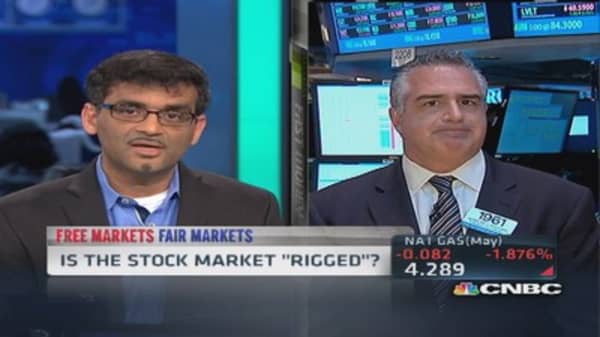Read MoreMark Cuban rips high-frequency trading
This is a disaster for the U.S. capital markets. It only weakens and threatens the very existence of a strong, vibrant, robust capital market. It causes mispricing in stocks and clear frustration among asset managers.
You have to ask: Why do we need 90+ venues to trade stocks? Unlike retail, where there is plenty of competition in price, that is not the case in equities at all. Why are investment banks allowed to internalize? Why are there so many dark pools? How is this helpful at all to the public marketplace? Doesn't anyone else see the glaringly clear conflict of interest this creates?
Read MoreCramer: Here's how to beat the 'Flash Boys'
I applaud the New York Attorney General Eric Schneiderman, author Michael Lewis, the FBI and the many market participants who have been screaming about this for years for forcing the conversation. In the end, it will surely help to drive future market structure conversations to help restore confidence and integrity to the greatest market in the world.
Kenny Polcari is director of NYSE floor operations at O'Neil Securities and a CNBC contributor, often appearing on "Power Lunch." Follow Kenny on Twitter @kennypolcari and visit him at kennypolcari.com.
Disclosure: The market commentary is the opinion of the author and is based on decades of industry and market experience; however no guarantee is made or implied with respect to these opinions. This commentary is not nor is it intended to be relied upon as authoritative or taken in substitution for the exercise of judgment. The comments noted herein should not be construed as an offer to sell or the solicitation of an offer to buy or sell any financial product, or an official statement or endorsement of O'Neil Securities or its affiliates.




